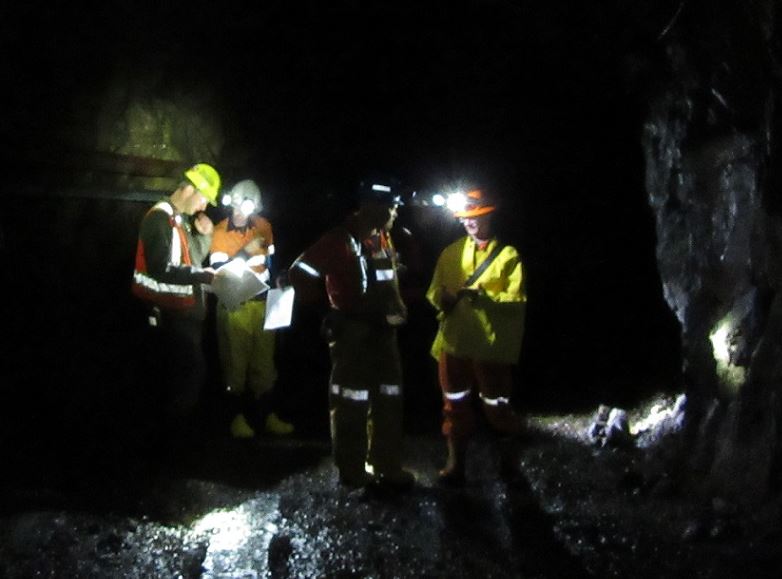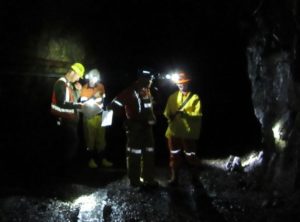Skeena advances on latest Snip drill results

Mining team evaluating the ramp at the past-producing Snip Mine in northwest British Columbia. Source: Skeena Resources Ltd.

Skeena Resources Ltd. [SKE-TSXVSKREF-OTC] on Thursday August 16 released final assay results from the 9,583-metre Phase II surface and underground drilling program at the company’s 100%-owned Snip Project in British Columbia’s Golden Triangle region.
The former Snip Mine was a high-grade mine that produced approximately one million ounces of gold from 1991 to 1999, at an average gold grade of 25 g/t at a 12 g/t gold reserve cut off.
Snip was historically burdened with the high cost of being a fly-in/fly-out operation that was dependent on diesel fuel. Concentrates were transported from the site by hovercraft in the summer and by plane in the winter.
However, the prospects for redeveloping the Snip property have improve dramatically due to substantially higher gold prices, subsequent improvements in infrastructure and access and exploration upside, the company has said.
The 2018 Phase II diamond program was drilled from existing underground infrastructure. The 2018 program is building upon the data gathered from the 2017 Phase I campaign, and is designed to further delineate known mineralization in areas with low drill density, and to expand newly modelled zones via widely spaced exploratory step-out drill holes.
The aim has been to validate historic data in preparation for a maiden resource estimate.
Phase II drilling highlights include 13.80 g/t gold over 18 metres (UG18-110) and 34.73 g/t gold over 3.5 metres (UG18-109).
Recent drilling has focused on remnants of the Twin Zone, an area that accounted for 60% of Snip’s production. Other sub parallel structures located in the footwall of the Twin Zone accounted for the rest of the production.
“The recently completed Phase II drilling program on the Eastern and Twin zones continues to encounter gold grades and mineralization thicknesses which are significantly above those of historical drilling programs,” the company said in a press release, Thursday.
“The results from the Eastern Twin zone are very encouraging as we continue to populate the historical database with modern sampling protocols,” the company said.
“Assay results are demonstrating substantially larger widths of mineralization that were left undeveloped due to lower historical metal prices,” said Paul Geddes, Skeena’s Vice-President, Exploration. “The respectable grades and widths that we are delineating in the Phase II program should be amenable to underground mining scenarios that historically would have been below the necessary cut-off grade,” he said.
The company is now compiling all data received from the 2018 Phase II drilling campaign and a summation news release will be released shortly, along with information about future drill plans.
On Thursday, Skeena shares jumped 15.25% or $0.045 to 45 cents. The shares trade in a 52-week range of 80 cents and 29.5 cents.
Skeena is bidding to revive two of Canada’s most successful high grade precious metal mines – Snip and Eskay Creek.
If the company succeeds, it will mark another coup for Skeena Chairman Ron Netolitzky, who was involved in the discovery of the Eskay and Snip mines and was named Canadian Prospector of the Year back in 1990. Both projects are located in northwest British Columbia in an area known as the Golden Triangle.
Netolitzky is in this position after Skeena acquired a 100% interest in the former Snip Mine in July 2017 from Barrick Gold Corp. [ABX-TSE, NYSE]. Six months later, it secured an option to acquire a 100% stake in Eskay Creek from Barrick.
